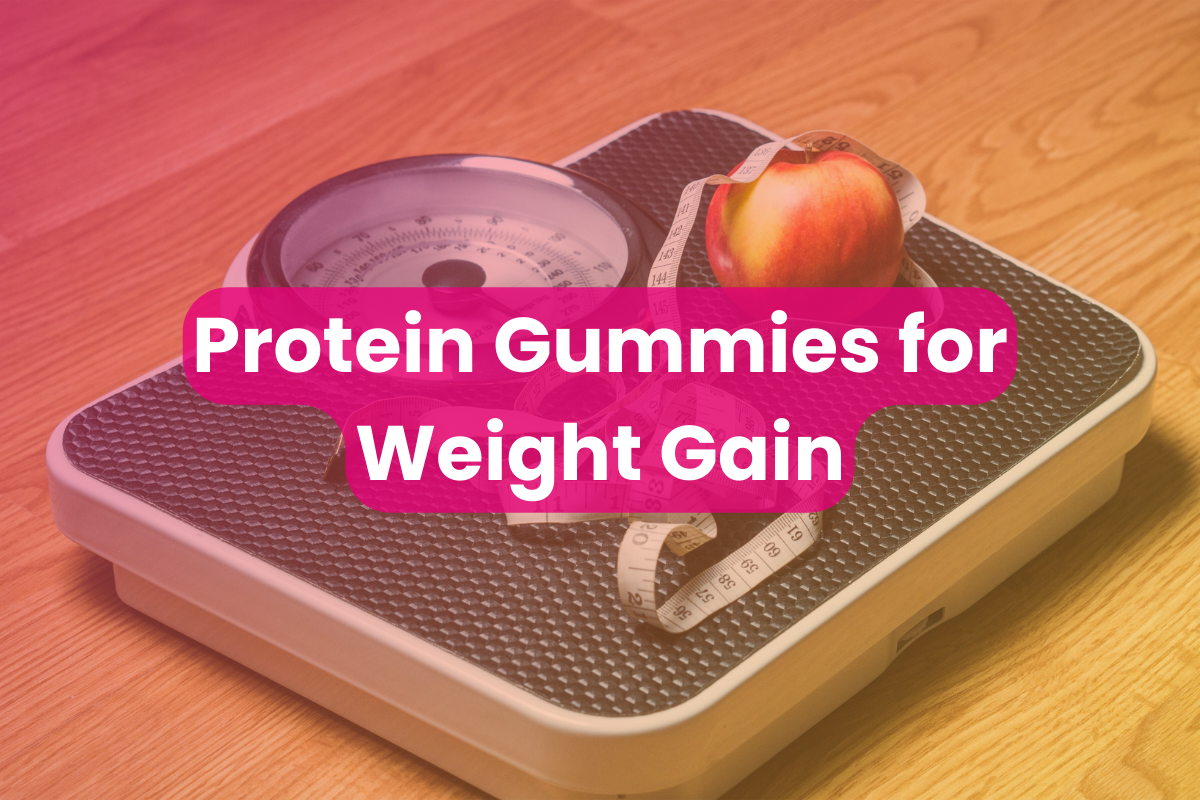
Lean muscle weight gain isn’t an easy process; it’s common for athletes to experience that “plateau” after going to the gym for a while. They feel stronger and can lift heavier, but they just don’t gain weight. The reason is often the lack of sufficient protein intake.
Protein supplements can be an excellent method to give you that little extra protein pump you’re missing, and protein gummies can be a great option.
What Are Protein Gummies?
Protein gummies are a candy-like alternative to protein shakes and bars, often containing between 5–15 grams of protein per serving. Whether you are a vegan, athlete, or simply looking for a healthy snack, protein gummies are made to boost your protein in-take while on your health journey.
As a base, they often use gelatin, or plant-based alternatives like pectin or agar. And for protein, it can range from plant-based rice protein to animal-based whey. Texture and taste vary greatly based on the combination of ingredients, meaning no two protein gummy supplements are similar. However, the kicker is that gummy texture, essentially transforms the experience from a from a supplement to a candy.
They’re easy to store and carry and require no preparation at all; just open the pack and chew, which is why they’re excellent for busy people.
While their protein content is lower compared to other supplements, they can still support muscle repair and growth.
They may also contain added vitamins and sweeteners for improved nutritional value and taste. Still, keep in mind that they are “additions” not “replacements” to other protein sources.
Are Protein Gummies Good for Weight Gain?
The short answer is yes. Protein gummies can be a helpful addition to weight gain, especially when paired with a balanced, calorie-rich diet.
The idea is simple; since protein is essential for muscle growth and recovery, protein gummies can indeed contribute to a healthy weight gain. This is especially notable if you’re an active gym goer or like to do strength training at home.
Despite not being the largest source of protein, their primary advantage is their convenience. You can literally take them anywhere you like at any given time and consume them immediately without any preparation.
When Is the Best Time to Eat a Protein Gummy Snack?
The best time to eat a protein gummy is right after a heavy workout when your muscles are recovering and in need of protein. Another good time to do so is in between meals.
Those who are bulking or trying to gain muscle weight need to eat at short intervals per day. If that’s not always available for you, protein gummies between meals can be a good boost.
How Are Protein Gummies Made?
Protein gummies are made by blending protein powder with other ingredients like gelatin or pectin. This is what creates the chewy texture that people enjoy.
The protein source can be whey or a plant-based protein source, often mixed with water, sweeteners, and flavorings to make the taste appealing.
From there, the whole mixture is heated until all the ingredients dissolve into a homogeneous, smooth base. At this point, it’s pretty much done. The mixture is poured while it’s hot into gummy molds where they can cool down and then later removed.
To prevent sticking the mixture to the mold, a separating medium (often sugar or cornstarch) is applied to the mold cavity before pouring the mixture. The gummies are then packaged and shipped.
Are There High Protein Gummies?
Yes, our AYO! Protein Gummies is a popular high-protein gummy as it has 20g of protein per bag, contains no artificial flavors, uses plant-based ingredients, and has a low sugar content.
For someone interested in a healthy, protein-filled snack to gain weight. Protein gummies are a strong option to consider.
To learn more about AYO! Protein Gummies, you can click here.
Summary
Protein gummies may not have the highest protein content, but their portability, taste, and ease of use make them a great option for anyone trying to gain lean muscle.
The process is simple: pick a taste that you like, eat a gummy or two after the workout, and maybe a couple more in between meals if you aren’t going to eat for more than three hours.





Comments (0)
Back to Learn